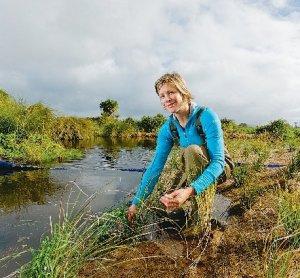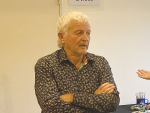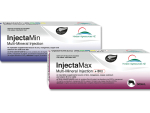Waikato peat lakes are shallow and often surrounded by intensive farming. That makes them more susceptible to sediment build-up and exacerbates problems like algal blooms caused by excessive nutrients.
“They have unique environments and we need to understand what is happening. It is a lot more complex than we first thought,” Eivers says. While nutrient leaching from farms is largely responsible for the deteriorating state of the peat lakes, over time the number of wetlands in the region has also been drastically reduced. The wetlands act as the “kidneys of the waterways”, filtering nutrients and improving water quality before the water makes its way into the lakes.
However wetlands often need to cover a large area to do that job properly.
So part of Eivers’ research, partly funded by WRC and DOC, involves trialling floating wetlands that sit on top of an existing water source. Alternatively a farmer could create a sediment pond, sit the wetland on top and potentially double the efficiency of nutrient filtering while also reducing the land mass required to do the job.
Over the next year Eivers will be monitoring the effectiveness of two floating wetlands by measuring the amount of nutrient uptake by them. But there’s more to it than that. Eivers knows that wetlands are sensitive to their surroundings and that one model does not fit all.
“There is no generic formula. As the research develops I will be observing which plants work better in which environment, working out how big a floating wetland needs to be to be effective and building on that.”
She is also studying the effectiveness of a biological fertiliser applied in a tailor-made programme for each area of the farm.
“The approach with this fertiliser is little and often but site specific. I’m looking at what happens when it reaches the water.”
Eivers says the ideal scenario would be to reduce the amount of nutrients leaching from farms by improving management practices such as reducing the amount of time stock spend in one area, altering fertiliser regimes or by reducing stocking rates.
But in the meantime her work is also having another positive spin-off. The wetlands are creating habitats for aquatic plants, fish and birds.

















